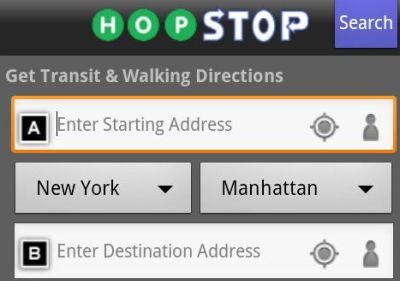This story below appeared in our inbox a few days ago. This is an essential part of risk management for public relations practitioners playing in the digital space. In the story below HopStop invites criticism. We advise our clients to do the same – not only because it’s good relationship building, but people are going to do it anyway. In the case of one of our clients, which was being attacked in a product review blog, our strategy has been to set up social/online sites in our clients name, so that customers complain to us, not to someone else. Makes sense doesn’t it, once you get your head around the concept of citizen journalism?
*****
In social media feedback, HopStop values the negative
Compliments on Twitter, Facebook and Yelp are nice, but the city transit site really values the criticism.
By Russell Working | Posted: August 24, 2011

Companies active in social media usually try to gin up praise from contented customers, highlighting shout-outs on Twitter or amassing “likes” on Facebook.
But what the city transit guide HopStop really finds helpful are the negative comments, says CEO Joe Meyer.
“A lot of companies both large and small don’t dive in head-first on social media and community and feedback in large part because they don’t want to hear the bad,” Meyer says. “They don’t want to hear their brand being spoken negatively of or their service being ripped on.
“For us, we value the negative feedback more than the positive feedback. … That negative feedback or that constructive feedback we can take action on to improve and evolve our service.”
That’s just one reason why HopStop has jumped in on social media and responds to the up to 200 mentions a day it garners on Twitter, Facebook, Yelp and Tumblr.
Popularity booming
Launched in 2005, HopStop, which specializes in travel on-foot, by bike and by public transport, receives four million monthly visits and nearly two million unique users in 62 markets in the U.S., Canada and Europe, including Russia. Its popularity has boomed among urbanites in part because of its devotion to engaging its community of users.
To open itself to criticism on social media, a company has to have a thick skin, says Meyer. But there are major benefits in accumulating feedback from the masses after, say, a new product release.
“You throw them out to millions of users, and they’ll find the bugs,” he says.
For example, there are more than 20 different state streets around the Boston metro area, he says. When a reader complained that he couldn’t find the one he was looking for, HopStop changed its algorithms to make sure that that situation didn’t arise again, not just for that specific case, but for all analogous uses.
Active users
Users frequently rely on the navigation service, and actively share links and destinations. An audience that involved expects a company would also listen and reply, and HopStop is eager to hear from them, says community manager Alexandra Dao, who tracks the din through TweetDeck.
People seem pleased and surprised when Dao jumps in to note a complaint or a compliment. “I see it the moment anybody tweets about us to say that we’re their best friend or we just saved their life, which people say often,” Dao says.
HopStop has made savvy use of its direction-finding powers to stir up discussion online. It just published a new HopStop report listing the top 10 beer gardens and hotel rooftop bars in New York, which was heavily retweeted. Its calorie counter and carbon emissions features have sparked stories and mentions in media outlets such as The New York Post and NBC New York, with headlines like “How Many Calories Are You Burning on Your Commute?”
“City living just got a little more smug,” Fast Company wrote. “You may have already felt good about taking the subway instead of driving, but now you can quantify exactly how good you should feel.”
HopStop partners with companies such as Hertz, Yelp and Zvents. Yelp “local picks,” for example, are displayed on HopStop’s front page, and the navigation tool is integrated into Yelp’s picks.
Companies must tread carefully in joining conversations on Yelp. Yelp encourages businesses to be involved, but warns companies to think about how they respond, Dao says.
“If someone makes a negative review, we’ll thank them for the review and maybe just ask them for more feedback, or explain if there was a problem they’ve run into that it’s been fixed now,” she says.
The Tumblr scrapbook
Tumblr is where HopStop posts links and occasionally interesting photos, like the one of a giant refrigerator abandoned on a subway platform in New York City.
“Tumblr is very social,” Dao says. “Every post can be ‘liked,’ it can be reblogged. … I liken it to a scrapbook.”
Naturally, a company that’s all about finding your way is actively adding mobile applications. It now offers apps for the iPhone and Android, and it allows people to text two addresses and receive directions from one to the other in a reply. It is developing apps for the BlackBerry, Windows 7 and the iPad. Meyer hopes to roll them out before the end of the year.
HopStop’s presence on so many social platforms offers a chance to sit in the discussions.
“It kind of goes to the philosophy that any and all ways that users can talk with us, to us, about us, it doesn’t matter the platform, we just want to open up the lines of communications,” Dao says.





